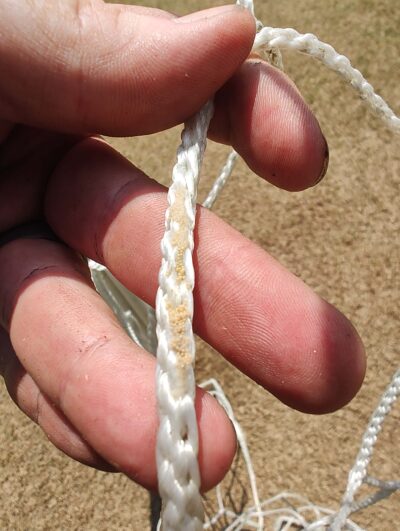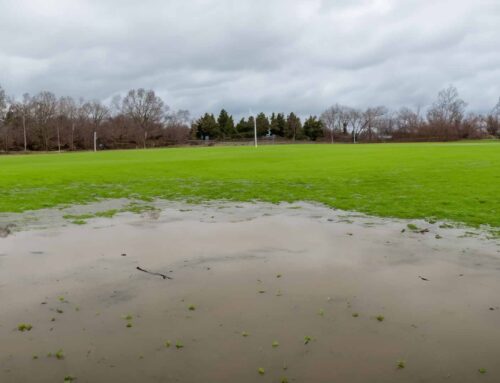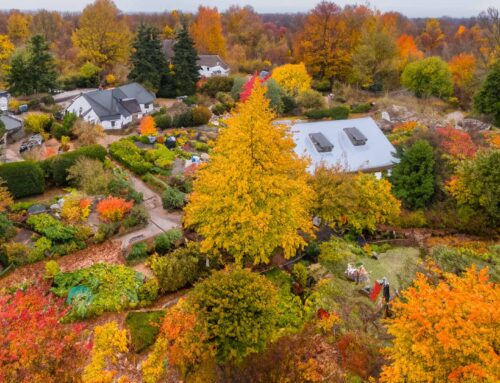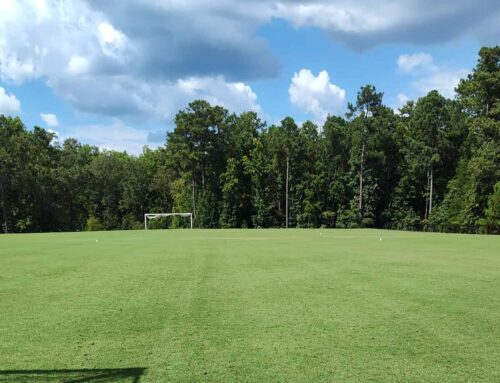Beware of Fall Armyworms: Protecting Your Lawn in LaGrange
As summer winds down, a common but damaging issue arises for lawns: the arrival of fall armyworms. These ravenous pests can cause significant damage to lawns in a short period, making swift identification and treatment crucial for maintaining healthy landscapes. At LaGrange Landscape & Maintenance, we’ve already addressed this issue this season, underscoring the importance of timely intervention.
“We’ve noticed these pests are active now in LaGrange, and we’ve already had to treat two properties over the weekend. If not addressed promptly, they can cause extensive damage in just one day.” — Trey Ansley, Horticulturist and Grounds Maintenance Manager.
What Are Fall Armyworms?
Fall armyworms are the larval stage of a moth species known for their insatiable appetite for grass and crops. They begin arriving from further south in late summer and early fall (most years), laying eggs in clusters on vertical surfaces. These clutches of eggs can range from a few dozen to hundreds of eggs per clutch. Once hatched, the larvae can quickly consume large areas of lawn, leaving behind brown, dead patches.
How do you identify armyworms? Recognition and signs of infestation
Fall armyworms can be identified by their distinctive appearance:
1. Appearance of the Larvae
Color: Fall armyworms vary in color from green to brown or black.
Head: They have a yellowish-white head.
Stripes: They have distinctive stripes running along their body, with an inverted “Y” shape on their head.
2. Signs of Infestation
Browning of the Lawn: Check for sudden, irregular brown patches on your lawn, which can appear overnight as the larvae feed.
Visible Caterpillars: Look for the larvae themselves, often visible during the early morning or late in afternoon.They can be found crawling on grass blades or in the thatch layer.
3. Egg Clusters
Appearance: Though harder to spot, egg clusters are usually laid in masses on vertical surfaces such as trees, light poles, fence posts, playsets, or signs. They are covered with a fuzzy, grayish material.
4. Feeding Damage
Patterns: Damage often appears as irregular, stressed patches of grass. The affected areas may increase rapidly as the larvae continue to feed.
5. Presence of Birds and paper wasps
Bird Activity: Large groups of birds concentrated in specific areas of the turf can be a strong indicator of a fall armyworm infestation, as they are attracted to the larvae.
Presence of Red Paper Wasps: The presence of red paper wasps over areas of turf is also a good indicator since they are predators of armyworms.
The Importance of Timely Treatment
Fall armyworms can destroy a lawn quickly if left untreated. During a previous infestation, we observed how they had moved halfway across a soccer field within just one day. This rapid destruction underscores the importance of early detection and prompt action.
These attached photos from a previous infestation show how quickly they can spread. These were taken midday, and by the next morning, they had already covered half the field.


How to Control and Eliminate Fall Armyworms: Treatment Options and Prevention
1. Chemical Treatments
- Insecticides: Apply insecticides specifically designed to target armyworms. Common choices include products containing pyrethroids, spinosad, or bifenthrin. Follow the manufacturer’s instructions for dosage and application.
- Insect Growth Regulators: Applying a growth regulator will keep the larvae from developing further. Some IGR are specialized to only affect caterpillars and have no effects on other insects. They also can be used preventatively for areas that have been previously infested.
- Biological Control
- Beneficial Insects: Encourage a healthy population of natural predators such as parasitic wasps or predatory beetles, which can help control armyworm populations.
- Bacillus thuringiensis (Bt): This bacterial insecticide is effective against young larvae. It works by causing disease in the worms and is considered safe for other wildlife and humans.
- Cultural Practices
- Monitoring: Regularly inspect your lawn or field for early signs of infestation. Early detection allows for quicker intervention.
- Proper Lawn Care: Maintain healthy grass through proper fertilization, watering, and mowing practices. Healthy lawns are more resilient to pest damage.
- Removing Debris: Clean up fallen leaves and other debris where armyworms might hide.
- Physical Methods
- Hand Removal: For small infestations, you can manually pick off and remove armyworms from affected plants or areas.
- Destroying egg clutches by squishing them.
- Preventive Measures
- Plant Resistant Varieties: If possible, select grass or plant varieties resistant to armyworms. Armyworms tend to avoid centipede and zoysia grasses.
- Regular Inspections: Conduct regular inspections of your lawn or field to catch infestations early and apply treatments as needed.
Application Tips
- Timing: Apply treatments early in the morning or late in the evening to avoid harming beneficial insects.
- Coverage: Ensure thorough coverage of affected areas for the best results.
Always follow safety guidelines when using chemical treatments and consult with a pest control professional if you’re unsure about the best approach for your specific situation.
How We Can Help
At LaGrange Landscape & Maintenance, we use targeted treatments to eliminate fall armyworms and protect your lawn. Our approach includes:
- Monitoring areas that have a history of infestation.
- Treating the infestations as quickly as possible to minimize the damage.
- Monitoring the recovery of the turf and fertilizing or re-treating if necessary.
Our team is dedicated to maintaining the beauty and health of your commercial and residential landscapes. If you suspect an armyworm infestation or want to protect your property from future outbreaks, contact us for a consultation. We’ll assess your lawn’s condition and provide tailored solutions to keep it vibrant and healthy.






